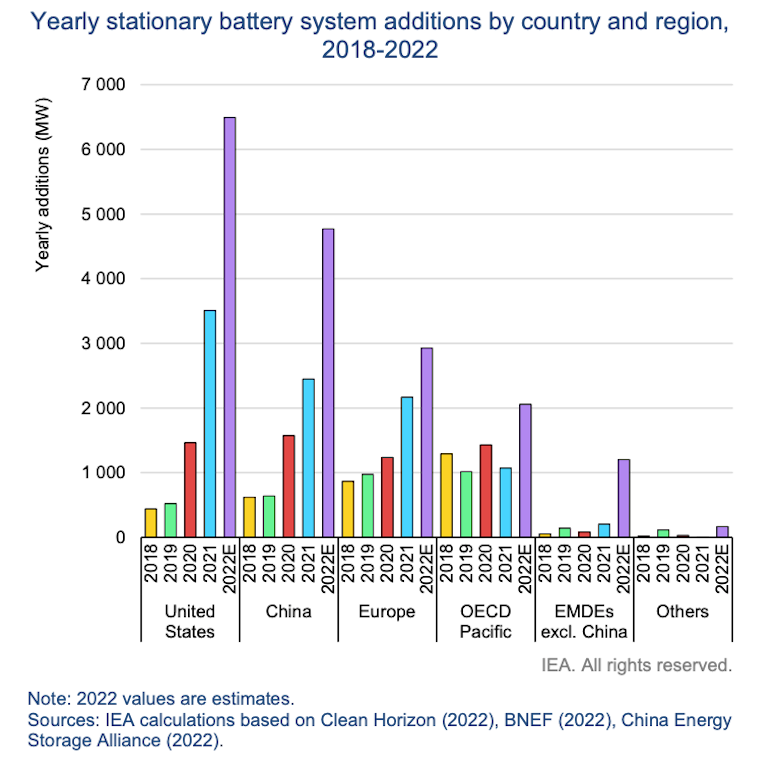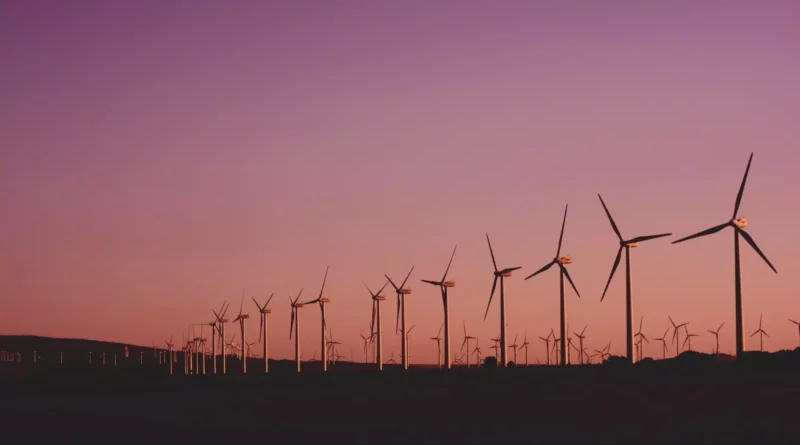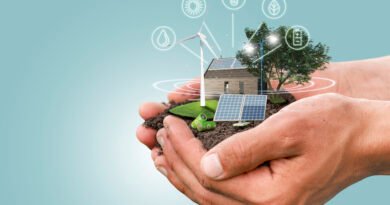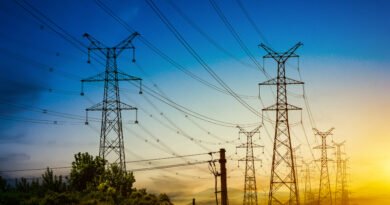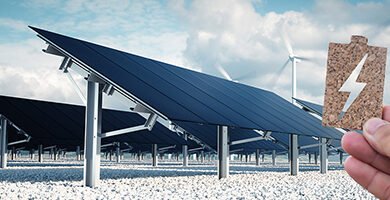Renewables – World’s Top Electricity Source within Three Years
An analysis by Carbon Brief, based on data from the International Energy Agency (IEA) electricity market report for 2023, indicates that the growth in electricity demand from 2022 to 2025 will be effectively met by a combination of renewables and a resurgence in nuclear power.
This shift towards cleaner energy sources will lead to a displacement of fossil fuels, resulting in a stabilization or reduction in global power-sector carbon dioxide (CO2) emissions, even in the face of rapidly increasing energy demand. To provide further insights, Carbon Brief presents the report’s key findings through five illustrative charts.
Electricity demand
The International Energy Agency (IEA) observes that the global energy crisis has prompted a downward revision of GDP growth projections for nearly every country, with the UK facing significant repercussions.
Nevertheless, the IEA anticipates a robust rebound in global electricity demand in 2023. An additional 2,500 terawatt hours (TWh) of demand is expected to be added by 2025, primarily concentrated in Asia.
This 9% growth surge would elevate total demand to 29,281 TWh, which is akin to introducing electricity consumption on a scale similar to that of the European Union into the global grid in just three years.
The IEA underscores that this growth will be heavily concentrated in Asia, a trend illustrated in the chart below. By 2025, China is poised to represent a third of global electricity demand, a significant increase from 5% in 1990 and 25% in 2015. Coupled with substantial growth in other parts of Asia, the region is projected to account for more than half of global electricity demand, marking a historic milestone.
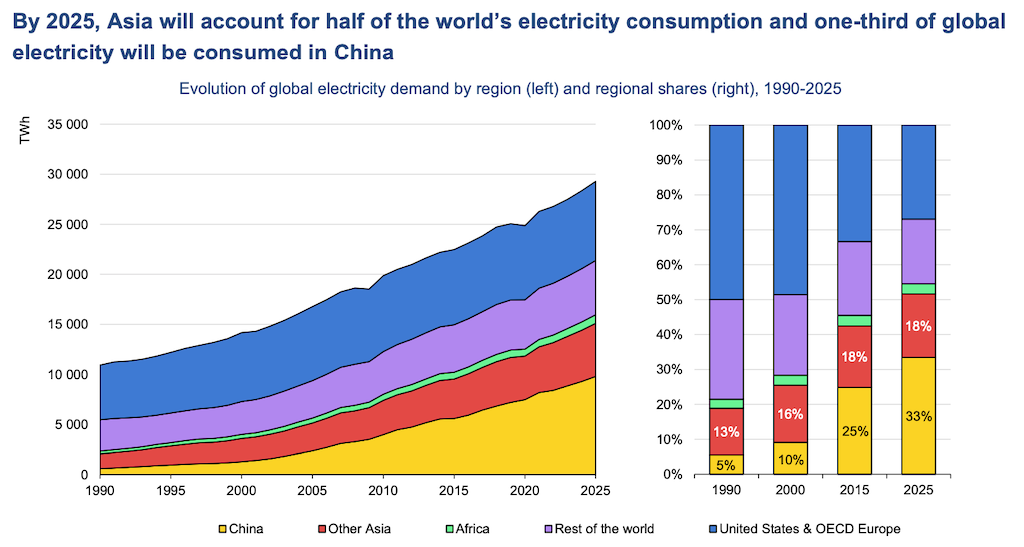
Renewables Growth
The IEA further emphasizes that renewables and nuclear energy will play a dominant role in the expansion of electricity demand:
“Renewables and nuclear energy will together take the lead in meeting the surging global electricity supply needs over the next three years, accounting for more than 90% of the additional demand on average.”
When examining the overall perspective, Carbon Brief’s analysis of the IEA data reveals that global electricity generation is projected to increase by 2,493 terawatt hours (TWh) between 2022 and 2025.
The IEA anticipates that the bulk of this growth will be met by an increase in renewable energy generation, amounting to 2,450 TWh. This constitutes a remarkable 98% of the total upsurge in global demand.
Furthermore, the IEA envisions a resurgence in nuclear energy generation, particularly driven by developments in Asia. Ongoing construction in China and India, coupled with reactor restarts in France and Japan, is set to lead to a growth of 302 TWh in nuclear output by 2025.
In combination, these figures indicate that clean energy sources will outpace the rise in global electricity demand, leading to a displacement of fossil fuels in the process. The chart below illustrates the growth in electricity generation by fuel, with renewables (red) almost matching the entire increase (blue).
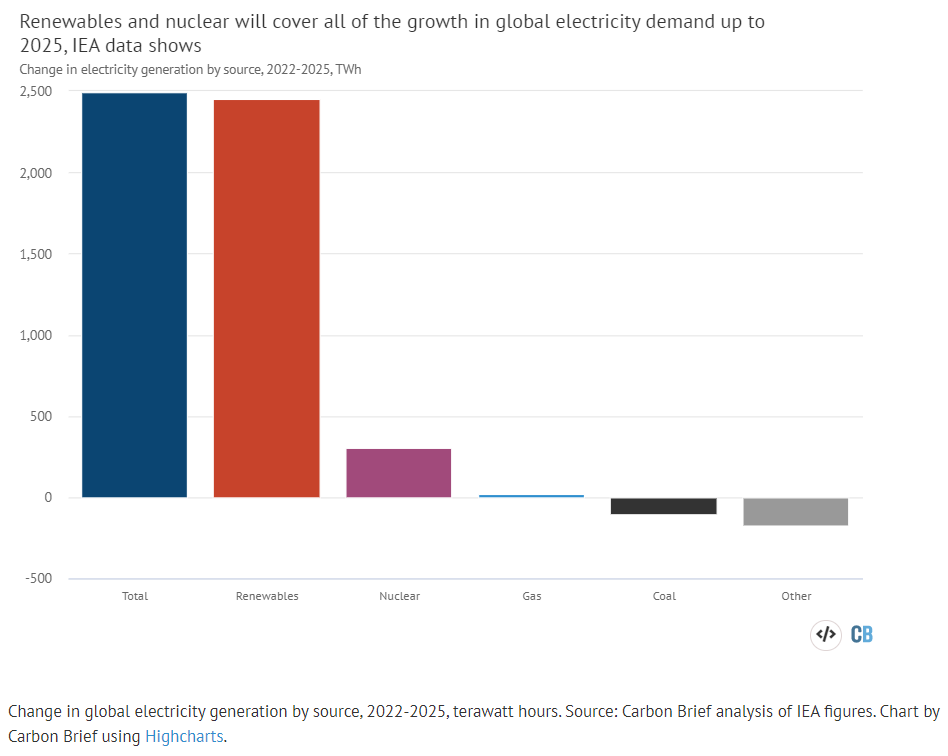
Power Plateau
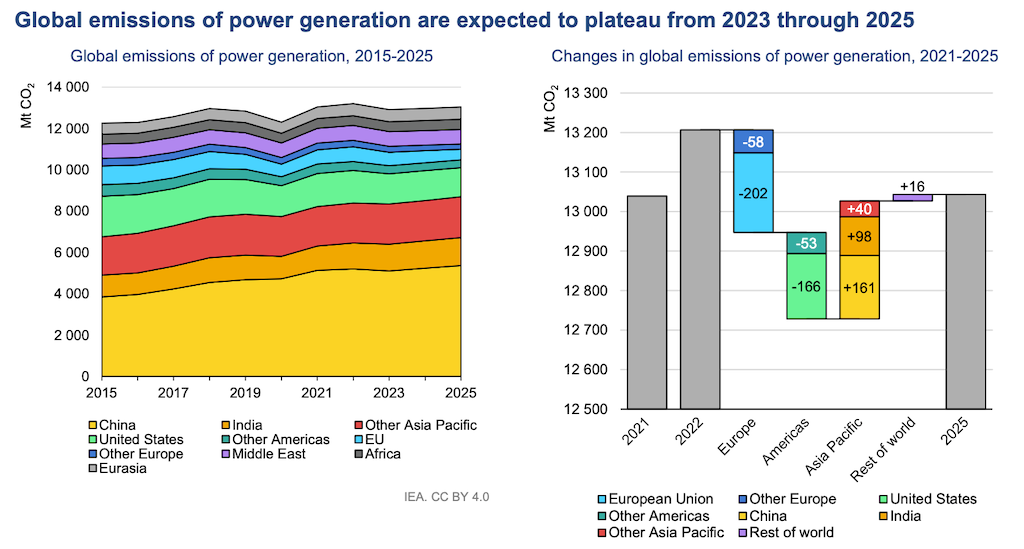
The increasing dominance of clean energy over fossil fuel electricity generation is expected to lead to a stabilization of power-sector CO2 emissions, as indicated by the IEA, shown in the left chart below.
In fact, more detailed data from the IEA suggests a slight decrease in power-sector CO2 emissions by 2025, as shown in the right chart. The reductions in Europe (depicted in blues) and the Americas (represented by greens) are projected to offset the increases in the Asia Pacific region (indicated by yellow, red, and orange). It’s worth noting, however, that the power-sector emissions reached a historic peak in 2022, according to the IEA. This implies that emissions are likely to remain at or just below this record high for the next few years, rather than experiencing a rapid decline.
This forecast from the IEA aligns with a prediction made by the Rocky Mountain Institute earlier this year, suggesting that the world has reached the peak of fossil fuel use for electricity generation, thanks to the accelerating expansion of wind and solar power. The institute went on to project a 4% annual decline in fossil fuel generation from 2025 through to 2030.
Challenges Ahead in Renewables
The IEA highlights that as wind and solar energy contribute increasingly substantial portions of the world’s electricity, challenges will emerge. It underscores that the electricity supply and demand are becoming more reliant on weather conditions, citing recent instances of heatwaves, storms, and droughts as examples.
Consequently, this underscores the growing need for enhanced demand-side flexibility from consumers and an expansion of storage capacity. Additionally, the IEA underscores the importance of having adequate “dispatchable” capacity that can be readily turned on or off. The report specifies:
“In a decarbonized electricity sector, dispatchable renewables such as hydro reservoirs, geothermal, and biomass plants will be essential to complement the variable renewables, namely wind and solar.”
Nonetheless, the report emphasizes that the challenges associated with integrating variable renewables do not currently impede their expansion. It clarifies:
“There is significant potential for further capacity expansion of variable renewables in many regions of the world without encountering major system integration bottlenecks.”
In a related observation, the report notes a growing trend in the construction of battery storage systems. On a global scale, approximately 17 gigawatts (GW, equivalent to a thousand megawatts) of new battery capacity were added in 2022, marking a notable 90% increase compared to the previous year.
Within this global context, the IEA reports that battery additions witnessed an 80% growth in the United States, a 100% surge in China, a 35% uptick in the European Union, and a remarkable sixfold (~500%) increase in emerging economies outside of China.
